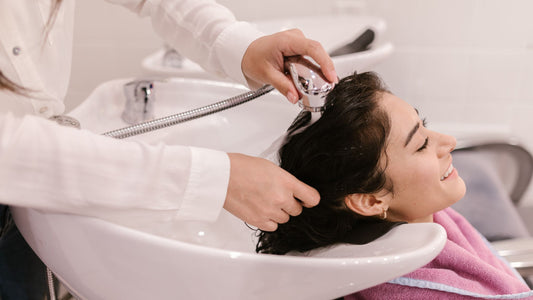Is Nanoplastia Hair Treatment Safe for Damaged Hair ?
Understanding Nanoplastia: A Brief Overview
Nanoplastia is a cutting-edge hair straightening and smoothing treatment that's been making waves in the beauty industry. Originating from Brazil, this treatment uses nano-technology to penetrate deep into the hair fibers, delivering nutrients and restructuring agents that improve hair texture and appearance. Unlike traditional keratin treatments, nanoplastia is formaldehyde-free, which initially suggests a safer approach for hair health.
How Does Nanoplastia Work?
The magic of nanoplastia lies in its use of natural ingredients combined with nano-molecular science. Ingredients typically include amino acids, oils, and natural extracts that bond with the hair structure. During the treatment, these components are activated by heat, which helps them to penetrate the hair shaft deeply, reducing frizz and smoothing curls without the harsh chemicals found in other straightening treatments.
Is It Safe for Damaged Hair?
Here’s the scoop—damaged hair is vulnerable, so the thought of applying any chemical treatment can be daunting. However, nanoplastia is often touted for its hair-friendly formula. Here's what makes it particularly appealing for damaged tresses:
- Formaldehyde-Free: Lack of harsh chemicals reduces the risk of further damage and irritation that can occur with other straightening treatments.
- Moisturizing Ingredients: The treatment is enriched with hydrating components that help to moisturize and repair hair fibers.
- Low Heat Requirement: Unlike treatments that require extremely high temperatures, nanoplastia can be effective with moderately warm temperatures, which helps in minimizing heat damage.
Potential Risks and Considerations
While nanoplastia is generally safer than many other chemical treatments, no treatment is without its risks, especially for already damaged hair:
- Existing Damage Exacerbation: Severely damaged or over-processed hair might not withstand even mild chemical treatments well.
- Allergic Reactions: Always conduct a patch test to rule out potential allergic reactions to any of the ingredients used in the treatment.
Aftercare and Maintenance
To maximize the benefits of a nanoplastia treatment and ensure the safety of your hair, consider the following tips:
- Professional Recommended Shampoos: These shampoos help maintain the treatment's effects longer without stripping away natural oils.
- Regular Conditioning Treatments: Keep your hair hydrated with deep conditioning masks and oils.
- Avoid Over-Washing: Limit washing to prevent dryness and preserve the smoothing effects of the treatment.
Conclusion
So, is nanoplastia safe for damaged hair? Generally, yes—with a few caveats. It's safer than many alternatives due to its formaldehyde-free formula and nourishing ingredients. However, it's crucial to consider the extent of hair damage and consult with a professional hairstylist to ensure it's the right treatment for you. With the right precautions and proper aftercare, nanoplastia can be a game-changer for those looking to rejuvenate and smooth their damaged locks.
Considering giving your hair a new lease on life with nanoplastia? Make sure to discuss your hair’s history and health with your stylist to tailor the treatment to your specific needs. Here's to happier, healthier hair!







